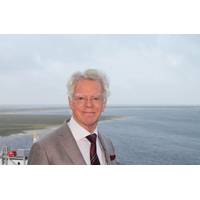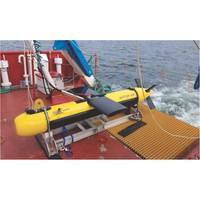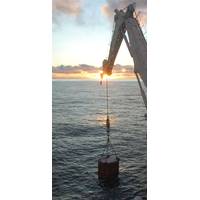
DEME Offshore, Barge Master Develop Feeder Solution for U.S. Offshore Wind Farms
Belgian offshore installation firm Deme Offshore and Dutch company Barge Master, which specializes in offshore motion compensation systems, have partnered up to further develop a U.S. Jones Act-compliant feeder solution for the upcoming offshore wind projects in the U.S.Last year, DEME Offshore was selected by wind farm developer Vineyard Vind to provide the offshore transport and installation of 62 GE Haliade offshore wind turbines for the Vineyard Wind 1 project, the first large-scale offshore wind installation in the United States. In a statement on Wednesday, DEME said it would collaborate

Edward Heerema – Dutch Courage with Single-minded Focus
, but also its willingness to alter plans and flex to demands, from adapting or renaming Pioneering Spirit to offering the Brit some milk in her tea.Edward Heerema is also someone who has confidence in engineering, whether that’s in pipelaying on dynamic positioning, complex single-lift motion compensation systems or deepwater pipelay, and now also deepsea mining and installing future up to 20 MW offshore wind turbines. For him and Allseas, the engineering involved in Pioneering Spirit wasn’t a gamble, even if the economics are perhaps challenging in today’s market. Since its launch

Meet Kraken’s Tentacle Autonomous LARS
performance envelope of the launch, towing and recovery of a sensor platform such as the KATFISH system. It achieves this by reducing the coupling of unwanted surface vessel motions into the towed sensor platform, which is essential to maintain the stability and safety of the towed platform. Motion compensation systems designed for decoupling of vessel motions can be either passively or actively controlled. Although passive systems are typically simpler, they are limited in the frequency and magnitude of motion they can decouple and can cause resonance issues due to the inherent natural frequency of
ABS Makes it Safer to ‘Walk to Work’
more companies want to benefit from W2W vessels and are looking to ABS for safety guidance,” says ABS Chief Technology Officer, Howard Fireman. “Our new guide provides the information the industry needs to execute safe personnel transfers.” Offshore access gangways with motion compensation systems are deployed and connected to the fixed or floating platform, maintaining the connection via telescoping features that provide a flat, inclined walking surface between the offshore support vessel and the delivery point. When sea conditions become challenging, the motion compensation systems
ABS: New Guidance for Certifying Lifting Appliances
; electrical and control systems; structure, material, fabrication, nondestructive evaluation and testing. Structural requirements for shipboard, offshore and heavy lift cranes have been completely revised and updated. New requirements have been added for subsea lifting, motion compensation systems, rope tensioning systems and computer-based control systems for cranes. Particular attention was given to updating requirements for personnel lifting. For the emergency recovery of personnel, three different levels of redundancy in the emergency recovery control systems of cranes have

DNV GL Targets Safer Approach to Subsea Lifting
provide guidelines on the evaluation of existing lifting appliances as well as the design and qualification of new lifting systems for subsea operations. Challenges related to modern subsea lifting operations such as higher lifting capacities, greater water depths and the inclusion of motion compensation systems, are covered to a lesser degree in the present industry codes. “The objective of the RP is to provide recommendations and guidance on important aspects relating to operational parameters, risk management, related technical challenges, engineering solutions, maintenance and inspection



 February 2024
February 2024





